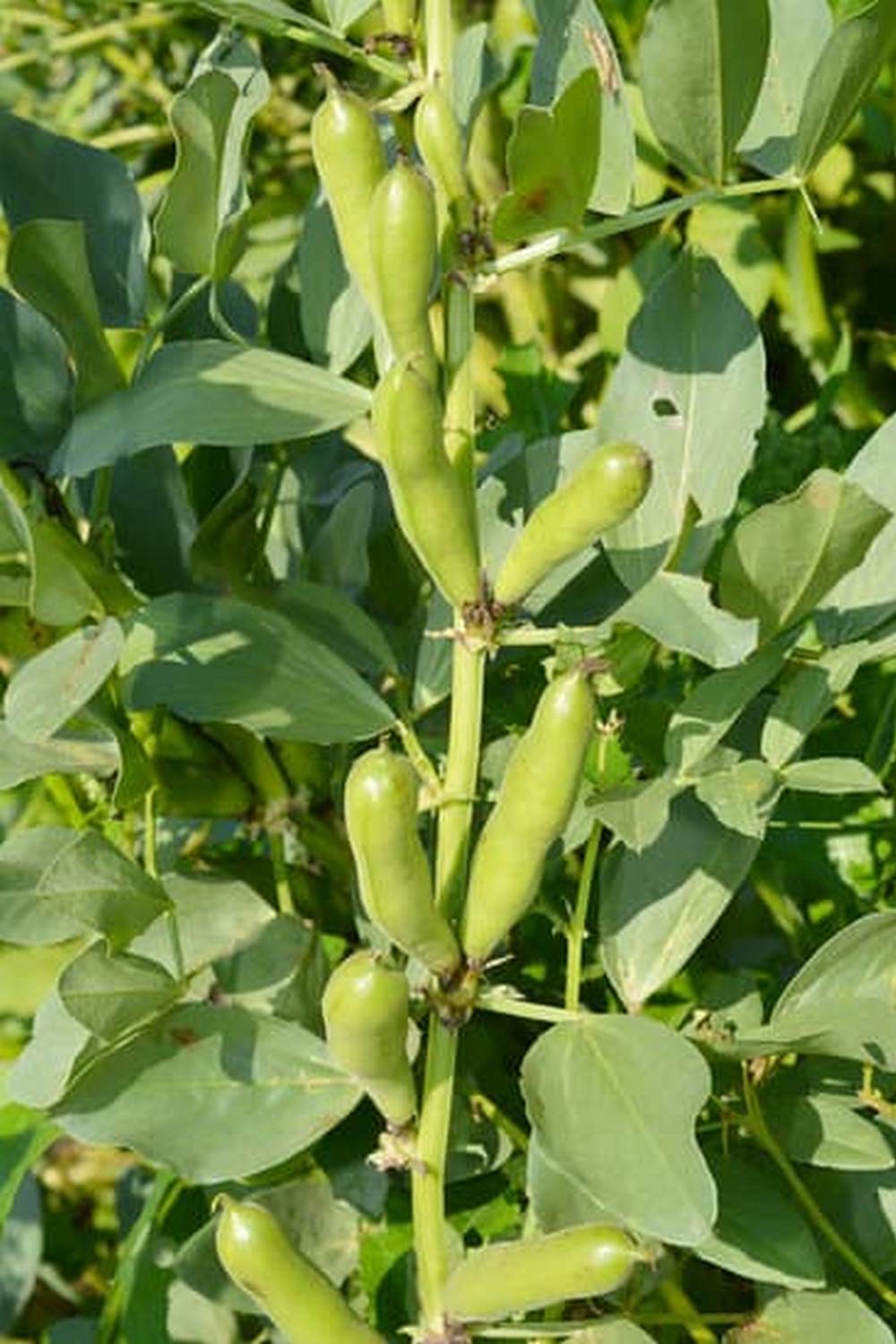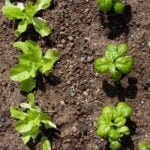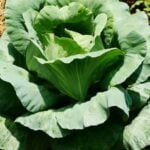Arizona fruit and vegetable gardening offers a unique opportunity for residents to cultivate a bountiful harvest in the desert climate. Whether you are a seasoned gardener or just beginning, understanding the specific conditions of Arizona can make all the difference in creating a successful garden. From choosing the right fruits and vegetables to maintaining healthy soil and combating pests, this guide will provide valuable insights into maximizing your gardening efforts in Arizona.
In Arizona, where extreme heat and limited rainfall can pose challenges, selecting the appropriate fruits and vegetables is crucial. By focusing on heat-tolerant varieties such as tomatoes, peppers, squash, and citrus fruits, gardeners can ensure a thriving harvest despite the arid conditions.
Understanding the soil composition and sunlight exposure in your specific location is also essential to optimize plant growth and yield. With careful consideration of these factors, you can create a flourishing garden that rewards you with fresh produce throughout the seasons.
To support successful planting and maintenance in Arizona, implementing proper watering techniques is key. From drip irrigation systems to mulching strategies, there are various methods to conserve water and promote healthy plant growth in this dry climate.
Additionally, staying vigilant against common pests and diseases that thrive in hot temperatures is essential for safeguarding your garden. By following expert tips and utilizing community resources available to Arizona gardeners, you can embark on a rewarding journey of cultivating delicious fruits and vegetables right in your backyard.
Choosing the Right Fruits and Vegetables for Arizona’s Climate
When it comes to Arizona fruit and vegetable gardening, selecting the right fruits and vegetables for the state’s unique climate is crucial for a successful harvest. With its hot, arid conditions, Arizona presents some challenges for gardeners, but also offers opportunities to grow a variety of delicious produce.
One important factor to consider when choosing what to plant is the length of the growing season in different regions of Arizona. Some areas have shorter growing seasons due to frost dates, while others enjoy year-round growing conditions.
In Arizona, it is essential to select drought-tolerant fruits and vegetables that can withstand the intense heat and limited water availability during certain times of the year. Drought-resistant plants like tomatoes, peppers, squash, and citrus fruits tend to thrive in the dry climate of Arizona.
These plants require less frequent watering and are better equipped to handle the high temperatures that are common in the state. Additionally, native varieties such as prickly pear cactus and mesquite beans are well-suited for Arizona’s environment and can add unique flavors to your garden harvest.
Another important consideration when choosing what to plant in an Arizona fruit and vegetable garden is understanding the concept of microclimates within the state. Due to variations in altitude, exposure, and proximity to bodies of water, different areas of Arizona can experience slightly different climatic conditions.
For example, regions at higher elevations may have cooler temperatures ideal for growing apples or strawberries, while lower desert areas may be better suited for crops like melons or pecans. By researching your specific location within Arizona and considering these microclimate factors, you can select fruits and vegetables that will thrive in your particular area.
| Arizona-Friendly Fruits | Arizona-Friendly Vegetables |
|---|---|
| Citrus (lemons, oranges) | Tomatoes |
| Figs | Peppers |
Understanding the Soil and Sunlight Requirements in Arizona
Arizona’s unique climate and environment present both challenges and opportunities for fruit and vegetable gardening enthusiasts. Understanding the soil composition and sunlight requirements in Arizona is crucial to ensure a successful harvest.
When it comes to soil, many parts of Arizona have alkaline or clay soils that may need amendments to improve drainage and nutrient availability. Conducting a soil test can help determine the pH level and nutrient content of your soil, allowing you to make informed decisions about fertilization and soil conditioning. Additionally, raised beds or container gardening are popular options for Arizona gardeners dealing with challenging soil conditions.
Sunlight is another key factor to consider when planning your Arizona fruit and vegetable garden. Most fruits and vegetables require full sun, which means they need at least six to eight hours of direct sunlight each day. In Arizona’s hot climate, providing shade during the hottest part of the day can help prevent heat stress on plants. Consider planting taller crops on the northern side of your garden to avoid shading shorter plants from essential sunlight.
Overall, by taking the time to understand the specific soil needs and sunlight requirements of your chosen fruits and vegetables, you can set yourself up for a successful harvest in your Arizona garden. Experimenting with different techniques and being attentive to your plants’ needs will help you adapt to the unique conditions of gardening in this beautiful desert state.
Tips for Successful Planting and Maintenance in Arizona
Arizona fruit and vegetable gardening comes with its challenges, but with the right tips and techniques, you can have a successful harvest. Here are some key practices to keep in mind for planting and maintenance in Arizona:
- Choose the right varieties: Opt for fruits and vegetables that are well-suited to Arizona’s climate, such as tomatoes, peppers, squash, citrus fruits like oranges and lemons, and herbs like basil and oregano. These plants tend to thrive in the warm weather and sunny conditions.
- Timing is crucial: Plant your crops according to the recommended planting dates for Arizona. For example, start planting heat-loving crops like eggplants and melons in late spring to early summer to ensure they have enough time to mature before cooler temperatures set in.
- Provide adequate support: Many fruiting plants like tomatoes and cucumbers require trellising or staking for support. Make sure to set up proper structures early on to prevent damage to the plants as they grow.
Proper maintenance is key to a successful Arizona garden:
- Regular watering: In the arid climate of Arizona, it’s essential to provide consistent watering to your fruits and vegetables. Consider using drip irrigation systems or soaker hoses to deliver water directly to the roots of the plants while minimizing evaporation.
- Weed control: Keep weeds at bay by regularly mulching around your plants. Weeds not only compete with your crops for nutrients but can also harbor pests and diseases that can damage your garden.
- Fertilize appropriately: Due to the sandy soils common in Arizona, nutrients may need more frequent replenishing. Use organic fertilizers or compost to provide essential nutrients for healthy plant growth without overloading the soil with chemicals.
By following these tips for successful planting and maintenance in an Arizona fruit and vegetable garden, you can enjoy a bountiful harvest throughout the growing season.
Dealing With Common Pests and Diseases in Arizona Gardens
Dealing with common pests and diseases is a crucial aspect of successful Arizona fruit and vegetable gardening. Here are some tips and strategies to help you protect your garden:
- Identify the pests: It’s essential to know which pests are prevalent in Arizona so you can take appropriate measures to control them. Common pests in Arizona gardens include aphids, whiteflies, spider mites, and hornworms.
- Natural predators: Encouraging natural predators like ladybugs, lacewings, and praying mantises can help keep pest populations in check. You can also introduce beneficial insects or nematodes to target specific pests without using harmful chemicals.
- Cultural practices: Implementing good gardening practices can help prevent pest infestations. Rotate your crops annually, remove plant debris regularly, and space out plants to improve air circulation and reduce the risk of diseases.
In addition to pests, Arizona gardens may also face challenges from various diseases that can affect your fruits and vegetables. Here are some strategies to combat common diseases:
- Choose disease-resistant varieties: Selecting plant varieties that are resistant to common diseases in Arizona can save you time and effort in managing potential infections.
- Proper watering: Overwatering or watering plants overhead can create conditions favorable for fungal diseases. Use drip irrigation or soaker hoses to water at the base of plants and avoid wetting the foliage.
- Sanitation practices: Regularly clean your garden tools, containers, and equipment to prevent the spread of pathogens. Remove infected plant parts promptly to prevent the disease from spreading further.
By staying vigilant, practicing preventative measures, and taking prompt action when necessary, you can effectively manage pests and diseases in your Arizona fruit and vegetable garden. With a proactive approach, you can enjoy a healthy harvest throughout the growing season without compromising the quality of your produce.
Watering Techniques for Arizona Fruit and Vegetable Gardens
Efficient Watering Practices
In Arizona, where water conservation is crucial, implementing efficient watering practices in your fruit and vegetable garden is essential. One effective technique is drip irrigation, which delivers water directly to the roots of plants, minimizing evaporation and water waste. Mulching around plants can also help retain moisture in the soil, reducing the frequency of watering needed. Additionally, installing a rainwater harvesting system can provide a sustainable source of water for your garden.
Timing and Frequency
Due to the arid climate in Arizona, it’s important to water your fruit and vegetable garden at the right times to prevent water loss through evaporation. Early mornings or evenings are ideal times for watering to ensure maximum absorption by the soil. The frequency of watering will depend on factors such as plant type, soil quality, and weather conditions. It’s crucial to monitor the moisture levels in the soil regularly and adjust your watering schedule accordingly.
Drought-Resistant Plants
To conserve water in your Arizona fruit and vegetable garden, consider planting drought-resistant varieties that can thrive in this challenging environment. Some options include tomatoes, peppers, squash, and citrus fruits like lemons and oranges. These plants have adapted to withstand periods of drought and require less frequent watering compared to other varieties. By selecting drought-resistant plants, you can reduce water consumption while still enjoying a bountiful harvest from your garden.
Harvesting and Preserving Your Bounty in Arizona
After months of diligent care and nurturing your Arizona fruit and vegetable garden, the time has finally come to reap the rewards of your hard work. Harvesting your produce at the right time is crucial to ensure peak flavor and freshness.
In Arizona, where the temperatures can soar during the summer months, it’s important to pick your fruits and vegetables early in the morning or late in the evening when the weather is cooler. This will help prevent wilting and dehydration of your crops.
Once you have harvested your bounty, it’s essential to properly store and preserve your fruits and vegetables to enjoy them for weeks to come. For delicate fruits like berries, it’s best to refrigerate them immediately after picking to prolong their shelf life.
Vegetables like tomatoes and peppers can be stored at room temperature but away from direct sunlight. Consider canning, freezing, or drying excess produce to prevent waste and enjoy a taste of your garden even during the off-season.
Preserving your harvest not only allows you to savor the flavors of summer throughout the year but also reduces food waste. By learning different preservation techniques such as pickling, fermenting, or making jams and jellies, you can make the most out of your Arizona fruit and vegetable gardening efforts. Additionally, sharing preserved goodies with friends and family is a great way to spread the joy of homegrown delights while showcasing the abundance of fresh produce that Arizona has to offer.
Seasonal Guide for Planting Fruits and Vegetables in Arizona
When it comes to Arizona fruit and vegetable gardening, understanding the seasonal guide for planting is crucial for a successful harvest. In Arizona, the climate varies depending on the region, but generally speaking, there are two main growing seasons: spring and fall. Each season provides unique opportunities for planting different fruits and vegetables that thrive in Arizona’s climate.
During the spring season in Arizona, gardeners can plant a variety of fruits and vegetables such as tomatoes, peppers, cucumbers, squash, melons, and herbs. These warm-season crops love the longer days and warmer temperatures that come with spring in Arizona. It’s important to start these plants indoors or in a greenhouse before transplanting them into your garden to give them a head start.
On the other hand, fall is also a great time for planting in Arizona. Cooler temperatures make it easier for cool-season crops like lettuce, spinach, kale, carrots, radishes, broccoli, and cauliflower to thrive. These vegetables are perfect for planting in late summer or early fall so they can mature during the milder weather that autumn brings. Plus, fall planting can extend your harvest well into winter in some parts of Arizona.
By following a seasonal guide for planting fruits and vegetables in Arizona, gardeners can maximize their harvest throughout the year. Understanding which crops to plant during each season based on the climate will help ensure a bountiful garden full of fresh produce. Whether you’re starting your first garden or are an experienced gardener looking to try something new, adapting to Arizona’s unique seasons is key to success in fruit and vegetable gardening.
Community Resources and Events for Arizona Gardeners
Arizona is home to a vibrant community of gardeners who share a passion for growing fruits and vegetables in the desert climate. One valuable resource for Arizona gardeners is the University of Arizona Cooperative Extension, which provides research-based information on gardening practices tailored to the state’s unique conditions. From soil testing services to workshops and classes, the Cooperative Extension offers a wealth of resources to help gardeners succeed.
Joining a local gardening club or organization can also be beneficial for Arizona gardeners looking to connect with like-minded individuals and learn from experienced growers. These groups often host events such as plant swaps, garden tours, and guest speaker presentations that provide opportunities for networking and knowledge sharing. Additionally, many communities in Arizona have community gardens where residents can come together to cultivate their own plots and learn from one another.
Throughout the year, various events take place in Arizona that cater to fruit and vegetable gardeners. From seed exchanges to seasonal planting workshops, there are plenty of opportunities to enhance your gardening skills and meet others who share your passion. The annual Arizona Fruit Growers Conference is a must-attend event for anyone interested in growing fruit in the state, featuring expert speakers, educational sessions, and vendor booths with supplies and resources specific to Arizona fruit cultivation.
By taking advantage of these community resources and participating in events tailored to Arizona fruit and vegetable gardening, gardeners can expand their knowledge, improve their harvests, and form connections with fellow enthusiasts. Whether you are a beginner looking to start your first garden or a seasoned gardener seeking new insights, the support and camaraderie found within these community spaces will enrich your gardening experience in the beautiful state of Arizona.
Conclusion
In conclusion, Arizona fruit and vegetable gardening presents a unique opportunity for individuals to connect with the land and cultivate their own produce in a challenging yet rewarding environment. By selecting the right fruits and vegetables suited for Arizona’s climate, understanding soil and sunlight requirements, implementing proper planting techniques, and effectively managing pests and diseases, gardeners can enjoy a bountiful harvest year-round.
Watering techniques play a critical role in the success of Arizona fruit and vegetable gardens, especially considering the arid conditions of the state. By utilizing efficient irrigation methods such as drip systems and mulching to retain moisture, gardeners can ensure that their plants receive adequate hydration without wastage.
Furthermore, by following a seasonal guide for planting fruits and vegetables in Arizona, gardeners can optimize their yield throughout the year. Harvesting and preserving the bounty adds another layer of satisfaction to the gardening experience, allowing individuals to enjoy their homegrown produce long after the growing season has ended. In essence, embracing Arizona fruit and vegetable gardening is not just about reaping delicious rewards but also about fostering a deep appreciation for nature’s beauty and resilience.
Frequently Asked Questions
What Fruits and Vegetables Grow Well in Arizona?
Arizona’s climate is well-suited for growing fruits and vegetables such as citrus fruits (like oranges, lemons, and grapefruits), melons, peppers, tomatoes, squash, cucumbers, and leafy greens like spinach and lettuce. These plants thrive in the warm weather and sunny conditions.
When Should I Start a Vegetable Garden in Arizona?
In Arizona, the best time to start a vegetable garden is typically in late winter or early spring when the temperatures start warming up. This allows plants to establish themselves before the intense heat of summer kicks in. It’s important to consider the specific planting times for each vegetable based on its individual preferences.
Can You Grow a Garden Year Round in Arizona?
Yes, it is possible to grow a garden year-round in Arizona with careful planning and consideration of seasonal changes. Planting a variety of crops that thrive in different seasons can help ensure continuous harvests throughout the year. Additionally, utilizing shade structures and proper watering techniques can help plants survive during extreme temperatures.

If you’re looking to get into vegetable gardening, or are just looking for some tips on how to make your current garden better, then you’ve come to the right place! My name is Ethel and I have been gardening for years. In this blog, I’m going to share with you some of my best tips on how to create a successful vegetable garden.





